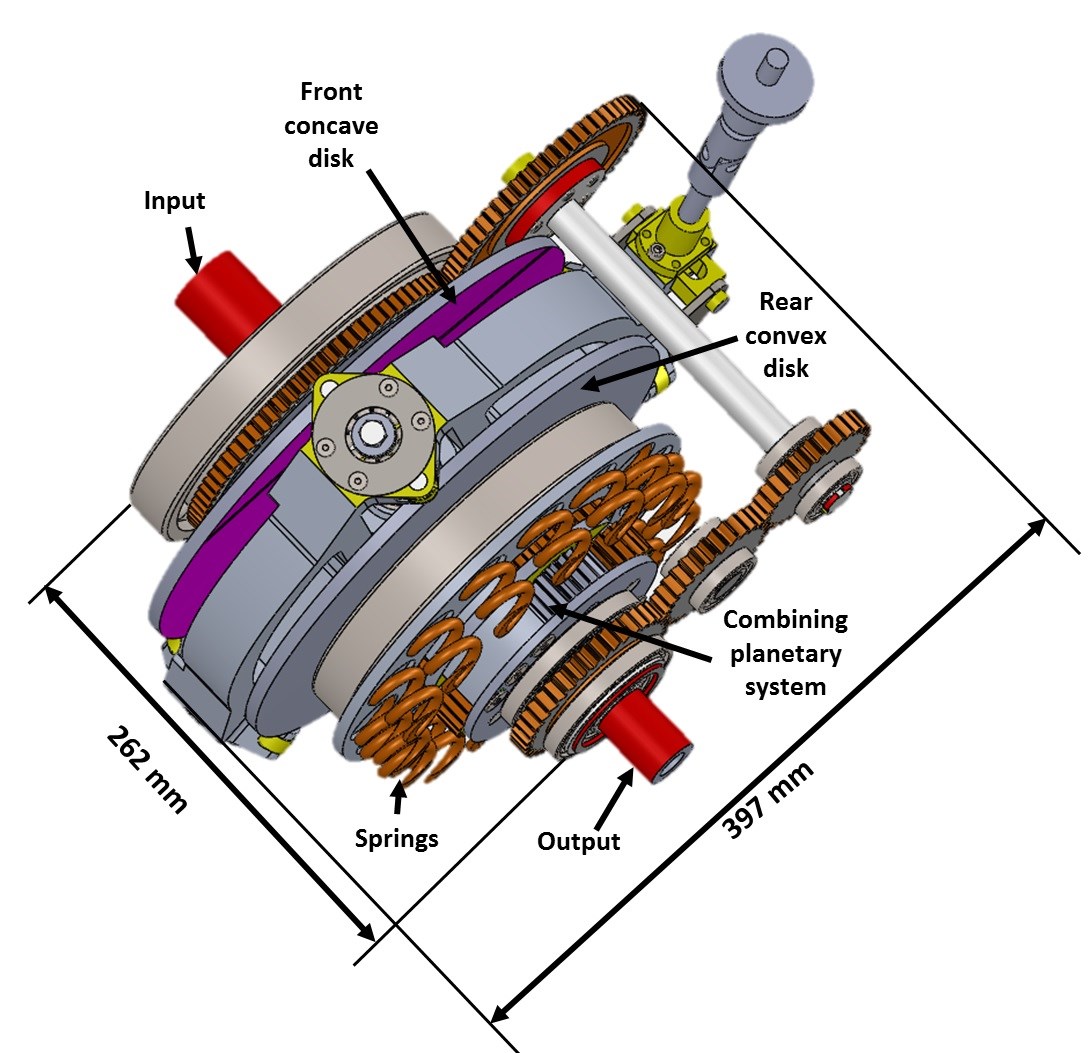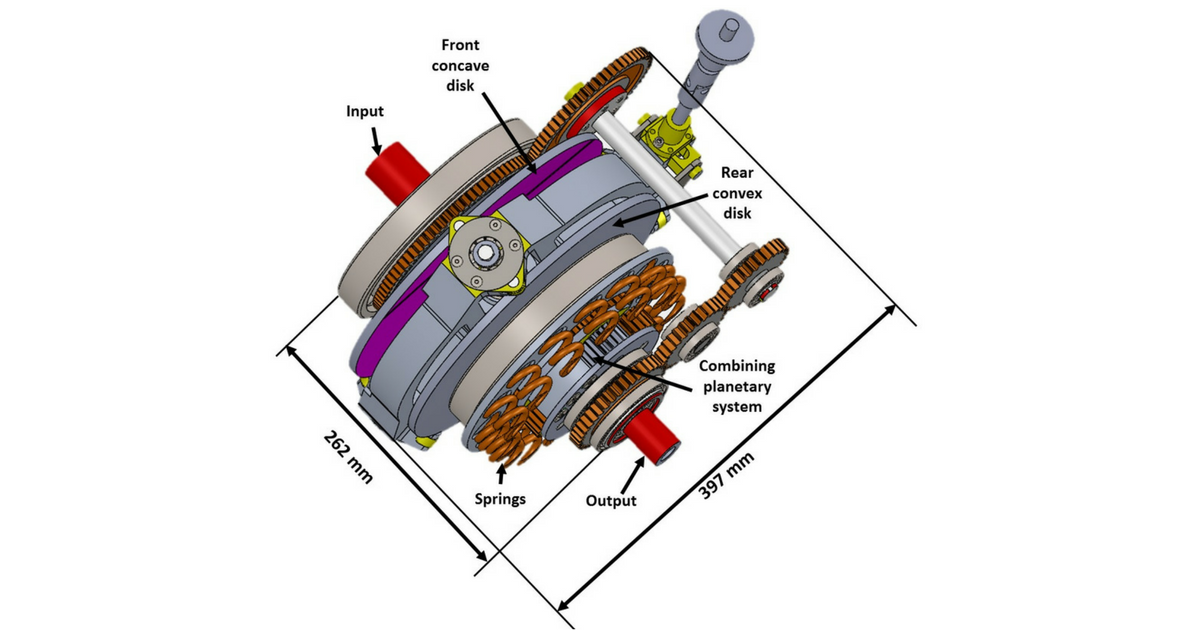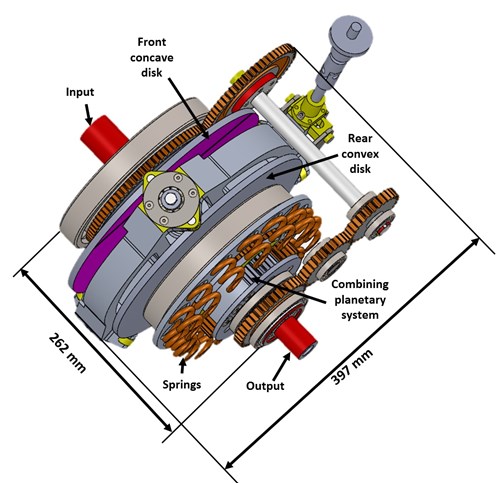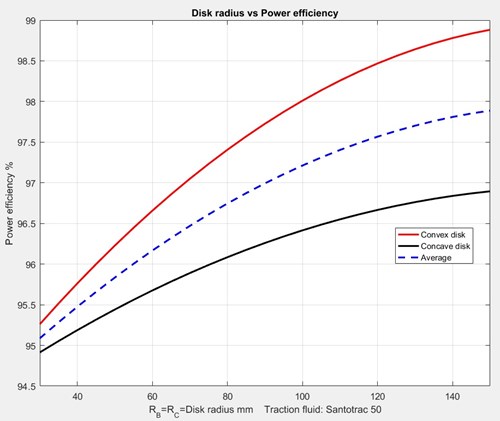Simulation of RADIALcvt Predicts Huge Advantages
Varibox CVT Technology have recently completed a power efficiency simulation of the RADIALcvt traction drive interface, the company’s latest CVT (Continuously Variable Transmission) invention and results demonstrate the innovation’s enormous fundamental advantages over current commercial and developmental CVTs.
The RADIALcvt has a number of fundamental advantages that set it apart from all other developmental and commercial CVT’s and these are listed below.



Figure 1. The RADIALcvt Variator
- One friction interface: Only one friction drive interface in series in a parallel power path. All other CVT’s, developmental and commercial have 2 friction drive interfaces in series thus resulting in a compound friction loss. Thus if the friction contacts have the same efficiency then the RADIALcvt will have 50% of the friction drive losses of other CVT’s.
- Line contact: The friction drive contact in the RADIALcvt friction drive can be a line contact, which is only possible in belt/chain and cone ring CVT but not possible in toroidal and planet ball CVT’s. Line contact reduces the maximum contact stress and increases power transfer capability.
- Constant input radius: The RADIALcvt has a constant friction drive input radius. All other CVT have a variable input radius which results in high surface rolling speeds and lower coefficient of friction which require higher clamping forces. The maximum surface rolling speed in the current RADIALcvt concept design is less than 15m/s.
- Six parallel power paths: The RADIALcvt has at least 6 parallel power paths. Such a large number of parallel paths is only possible in planet ball CVT’s.
- Large output friction disk: The output friction drive disk of the RADIALcvt can be positioned concentric and close to the engine flywheel and can approximate flywheel size. Thus the diameter of this output friction drive can be much larger than any of the belt/chain or toroidal or cone ring CVT output friction drive components. Due to this fact, the RADIALcvt provides its highest efficiency in low ratios associated with city driving.
- High power efficiency: The above facts result in a RADIALcvt with a friction drive contact power efficiency of 98% in low ratio to 95% in high ratio in a 4.7 ratio range variator as intended for small passenger vehicles as presented in Figure 1. With the use of an integrated two speed AMT (automated manual transmission), the ratio range is increased to 10 and beyond.
- No hydraulic control: The RADIALcvt is realised without any hydraulic control. All current developmental and commercial CVT require a hydraulic control system.
- Clamping force utilization: In the RADIALcvt configuration, a unit of clamping force supports two parallel friction drive interfaces, while in all other developmental and commercial CVT’s only one friction drive interface is supported. Losses due to clamping forces should thus be 50% lower in the RADIALcvt.
- Clamping force location: The RADIALcvt clamping force, bearing losses are only associated with the RADIALcvt output, namely the Convex and Concave disks, while the RADIALcvt input, the radial drivers, are in equilibrium. Thus these bearing losses, for a given clamping force, are only a function of the RADIALcvt output speed. This has the obvious low loss advantages in low output speed ratios. In contrast in all other CVT’s, the clamping force is associated with both the input and output speeds of the respective CVT, thus for a given clamping force the applicable speed for bearing loss calculation would be the average of the input and output speeds.
- Low bearing losses: Disk bearing (clamping force) losses, which are a well-known source of traction drive CVT losses varies between 1.5% and 2.5% of transmitted power.

Figure 2. Disk radius vs Power efficiency
Since the RADIALcvt uses existing very well developed traction/ friction drive technology, any potential licensee of Varibox’s technology can easily evaluate and verify the advantages of the RADIALcvt. The advantages of the RADIALcvt are realised by its unique patented configuration of components and therefore does not include any new unproven technology.
Download the full 37-page simulation document here or email a request to jnaude@varibox.com.


